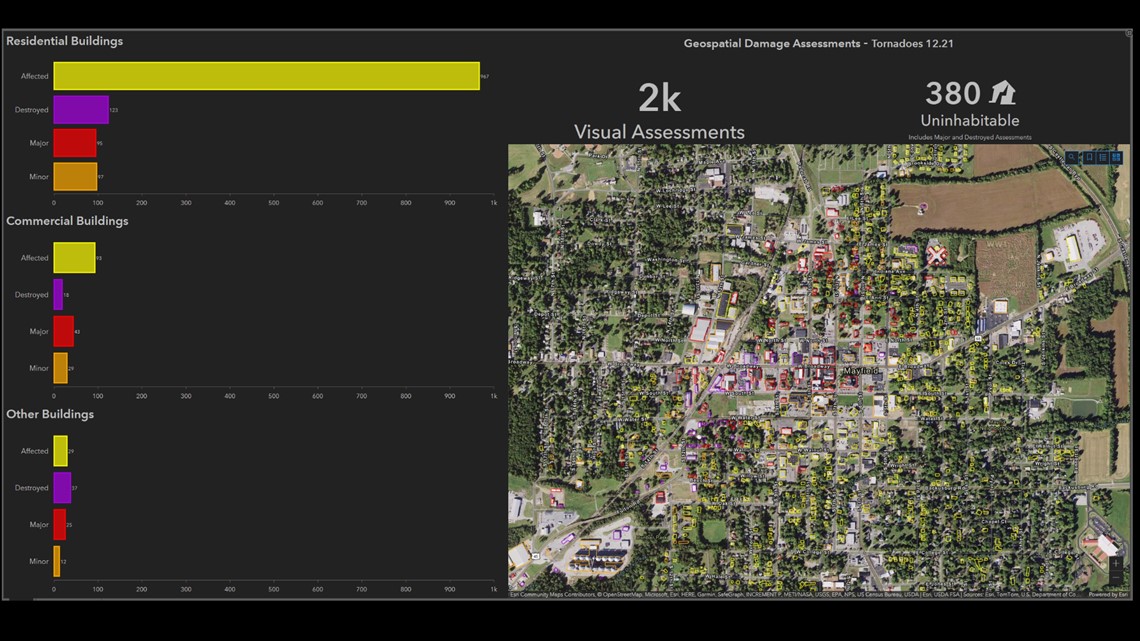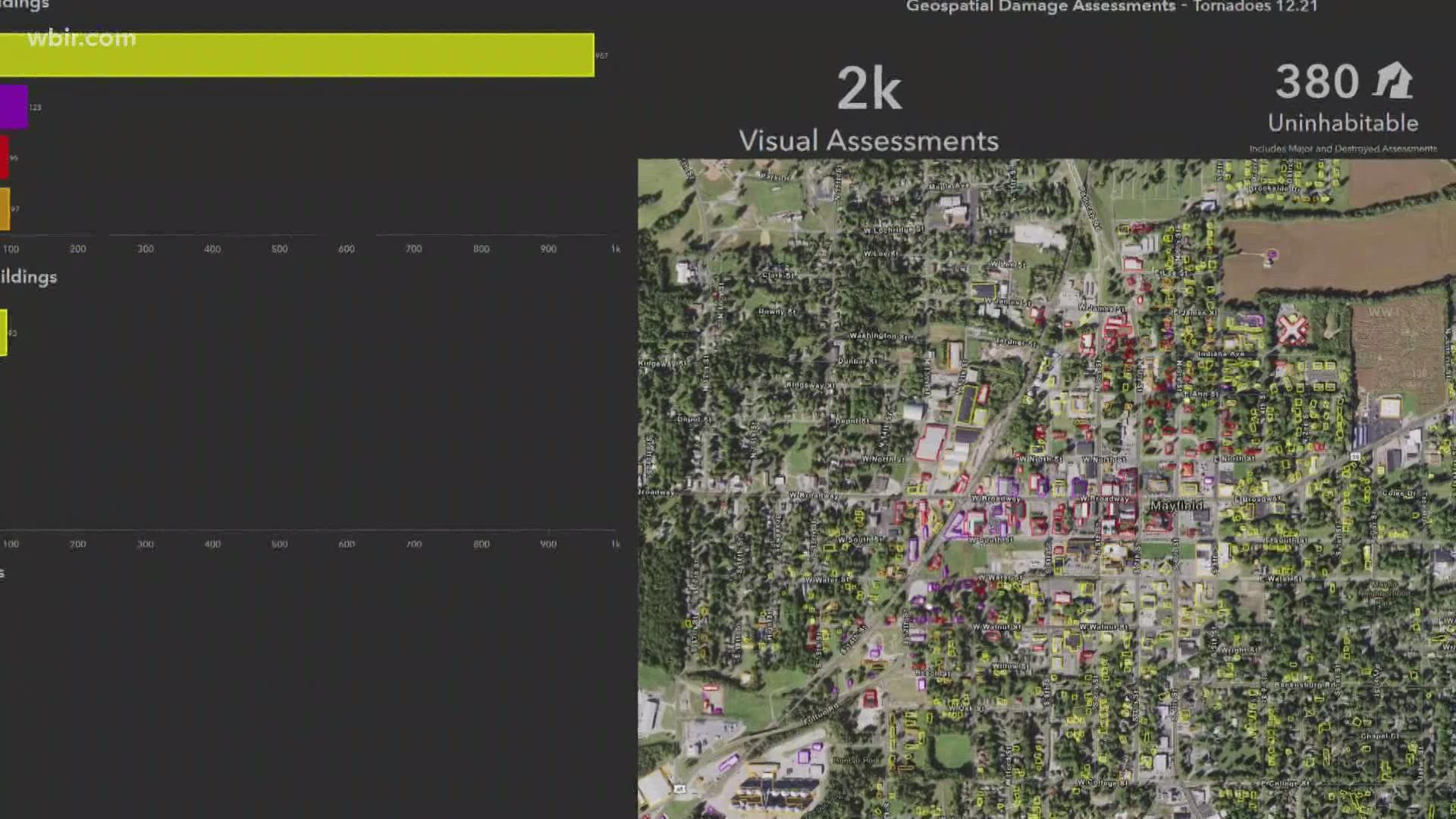OAK RIDGE, Tenn. — Researchers at Oak Ridge National Laboratory are working with FEMA to catalog storm damage.
In December, one of the worst tornadoes in Kentucky's history tore through the town of Mayfield, leveling hundreds of homes and buildings.
Melanie Laverdiere helped develop the USA Structures database, that cataloged all buildings over 450 square feet — including ones in the tornadoes' paths.
"That tells FEMA, what areas may need assistance quicker than others," said Laverdiere. "Is this a residential home? How many people are in this home, that type of information."
Using ORNL's data, and crowd-sourced information, FEMA developed a map of damage in Mayfield, Kentucky after the tornadoes.


"Previously this could have taken weeks or months to do," said Laverdiere. "They can get a clearer picture across a large area in just a matter of hours."
ORNL said their researchers used artificial intelligence to process images, detect patterns and "extract building features." They said the database involved stitching together the equivalent of 1 billion digital pictures.
Aides presented a map created by FEMA, using ORNL's data to President Joe Biden after the Mayfield Tornadoes in December.
During natural disasters, ORNL developed a tool for responders to track power outages in real-time.
EAGLE-I helps track power outages nationwide for "real-time situational awareness" of the U.S.'s energy infrastructure.
"What we do is collect for over 450 utilities every 15 minutes," said Aaron Myers, a geospatial systems architect at ORNL.
EAGLE-I tracks power outages at the county level across the country. Myers said the Department of Energy can track the path of storms using EAGLE-I technology.
"Whenever they need updated information, they can come straight to the EAGLE-I application and get that information," said Myers. "Before responders have actually landed on the ground, they can be prepared for what's happening."

